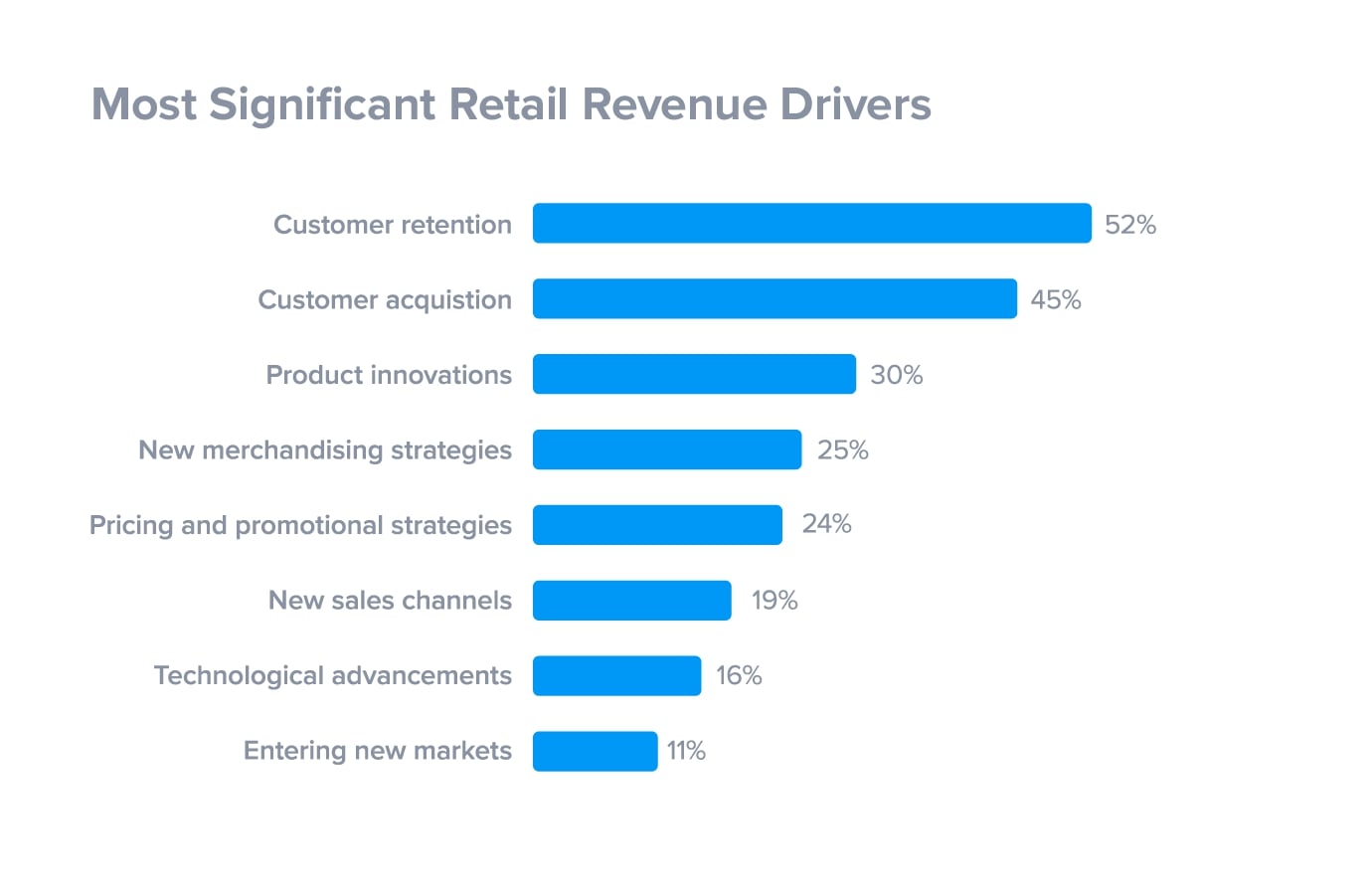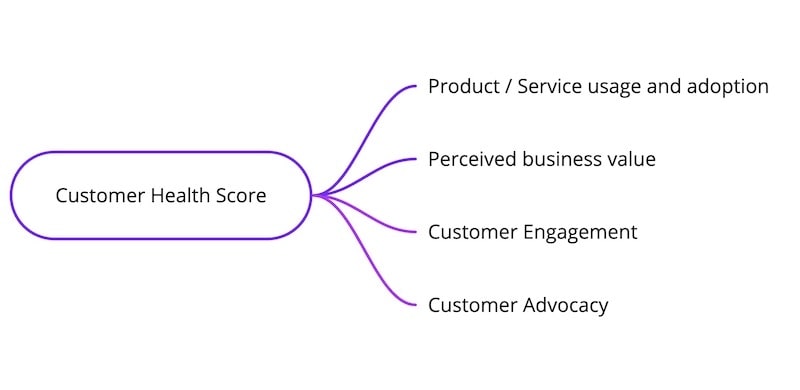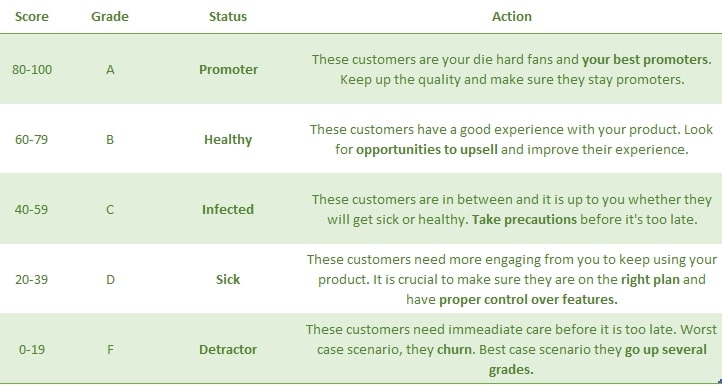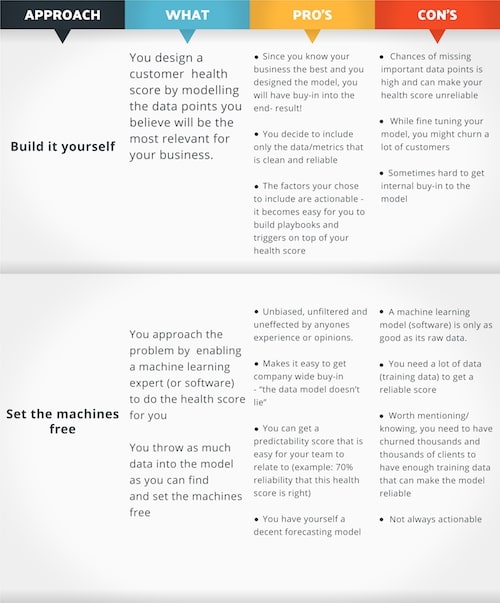The Customer Health Score measures the health of the consumer’s relationship with your company.
But calm down! We don’t want to know if your consumer is physically well.
You don’t know how to cultivate a relationship with your customers, who quickly forget about you and your brand?
When we talk about “customer health,” we are referring to their level of engagement with your product or service, as well as whether there are indications that they intend to “break” with the customer-company relationship.
One of the purposes of the Customer Health Score is to anticipate situations that could increase your churn rate. In addition, measuring customer health is essential to increase customer loyalty.
At this point, we cannot fail to mention that being able to increase customer retention by 5% can yield up to a 95% increase in profits! In other words, closely monitoring your consumer’s behavior tends to be quite profitable, do you agree?

Now let’s explore other advantages of the Customer Health Score and how to implement this metric in your company.
Table of Contents:
- What is Customer Health Score and What is It for?
- Why Measure the Health Score?
- How Significant is the Customer Health Score for a Business?
- How to Apply Customer Health Score in Your Company?
- Examples of Customer Health Score What Can Indicate the Health of This Relationship?
- What Do You Need to Do to Set Your Health Score?
What is Customer Health Score, and What is It for?
The customer Health Score is a strategic indicator used to analyze the customer’s health of the company. It measures, evaluates, and monitors engagement and consumer satisfaction with the organization and the contracted solution.
Monitoring this indicator makes it possible to identify and prevent your company from possible cancellations and even assess the chances of new business through cross-selling and up-selling.
Customer health analysis makes it possible to study consumer behavior and, based on this information, anticipate their actions or even be able to meet their needs more promptly.
Let’s exemplify,
Imagine an auto parts resale store for large automakers. One day, a salesperson updates his files and notices that customer X hasn’t purchased for more than three months.
This is the behavior that may indicate a possible cancellation.
However, if the company uses the Customer Health Score, it can anticipate churn and implement actions to bring that customer back. Like other customer relationship metrics, the Customer Health Score indicates a problem or opportunity with the customer base and each consumer.
Why Measure the Health Score?
To promote success for the customer, some moments and interactions are strong indicators of how the customer’s satisfaction is, being very positive in a way that he buys again, upgrades the contract and attracts new buyers, or negative, which leads to churn (cancellation).
The Health Score metric is, therefore, essential to monitor the level of each customer, helping in decision-making and in the support offered by the service team. It is also an indicator of the client’s adaptation to the solution offered, so it must be monitored from the onboarding phase of the contract.
Positive Health Scores indicate that the customer is satisfied and can buy more, so the team needs to be proactive to maintain a good relationship, checking how things are going and also finding opportunities to sell new solutions.
On the other hand, the negative ones light up a warning signal, in which the company must run to add value and reinforce its differentials and benefits for the customer.
It is also worth remembering that it is more expensive to acquire new customers than to sell more to existing ones. Without churns, there is greater predictability in terms of the budget and more security to continue with the work in the following months.
How Significant is the Customer Health Score for a Business?
In addition to contributing to customer loyalty, the Customer Health Score also helps to measure:
- the value that your products added to the customer,
- if they are interested in doing new business with your company,
- if they are willing to recommend it to other people and more.
If the customer’s health is “up to date,” he will soon be more satisfied with the company and perceive more value in the product or service purchased.

As a result, they tend to buy more and become natural promoters of your brand. The opposite is also true. If the Customer Health Score is low, there are issues related to these same elements.
Studies like the one conducted by Bain & Company show that loyal customers buy up to 67% more than new ones. A survey by the Nielsen Norman Group shows that 83% of loyal customers often recommend businesses they like to friends and family.
Given all these results, understanding and monitoring what a health score is will help your company identify problems and work to optimize various aspects of the relationship between the company and consumers.
In summary, the advantages of measuring the Customer Health Score are :
- Decrease cancellations (churn rate)
- Raise loyalty rates
- Increase revenue
- Improve customer experience
- Prioritize customers who need more attention
- Assign more value to the product/service
- Improve service.
All these benefits are directly related to your company’s success, and it couldn’t be the other way around; after all, every company has a great reason to survive and grow in its customers. If this relationship is not healthy, the tendency is that the company is not either. Therefore, it is necessary to seek a solution, a remedy, and find a cure for the problem.
How to Apply Customer Health Score in Your Company?
But how do we track this CS metric and get all the results we listed above? Here is a step-by-step guide on how to apply the Customer Health Score:
- Conceptualize “customer health” for your business
- Define which interactions will be scored and the weight of each
- Calculate the results
- Take the necessary actions.
Understand how it works and how to apply each of these steps below!
Conceptualize “customer health” for your business
The first step is to conceptualize what customer health means for your company.
Some examples of Customer Health Score consider that for some companies, the quality of customer health is measured by criteria such as not having opened any complaint tickets in the last 15 days.
Other companies need the customer to access the system daily to indicate that we are discussing healthy engagement.
One of the ways to define the criteria used by your company to measure the Customer Health Score is to use the concept of customer success. That is, what indicates the success of your client? From this, it is possible to identify which points indicate that your audience is satisfied and which suggest otherwise.

Define which interactions will be scored and the weight of each one
After that, list all these situations and organize them according to the importance of each one.
For example, is having no grievance tickets more or less critical than requesting retraining?
Just as the definition of customer health is specific to each company, which interactions will be scored, and their weight is also.
The categories analyzed in the Customer Health Score must have different degrees of importance.
This differentiation is essential to know what action to take in the face of each customer’s behavior and which should be prioritized to avoid churn.
Calculate the results
Your company’s Customer Health Score is, therefore, the sum of all interactions performed by each customer.
One way to quickly identify the result and determine a priority order is by relating color to each result.
For example, let’s assume you’ve considered the following ranges of interactions:
- Up to 50 points: churn potential / low health;
- From 51 to 79: neutral/intermediate health;
- From 80 to 100: excellent/high health.
| Range | Categorization | Color Code | Actionable Item |
| 0-50 | Unhealthy | Red | Offer Discount/ Free upgrade |
| 51-79 | Neutral | Yellow | Send Survey to learn more |
| 80-100 | Healthy | Blue | Connect with sales team for upselling |
Put the necessary actions into practice
Now that you know the result of your Customer Health Score and can see which customers to work with, you can put the actions defined for each situation into practice.
For a customer in the red belt, for example, it may be valid to get in touch to check which points of your product are not meeting their needs.
Perhaps he has a simple operational question, or he is not using the tool entirely, depending on what is being marketed.
Active support can resolve the issue and help prevent a possible cancellation.
A similar approach can be taken for the yellow belt customer and even be an excellent opportunity to offer something that makes their experience even better and more complete.
As for the green belt customer, the fact that he is completely satisfied doesn’t mean he doesn’t deserve your attention.
This is an excellent opportunity to work on the after-sales concept, including actions such as:
- Follow-up
- Applying a satisfaction survey
- Presenting loyalty programs, among other strategies.
Examples of Customer Health Score: What Can Indicate the Health of This Relationship?
Of course, your company can work and measure different aspects that will say a lot about customer health. But what are the prominent examples of Customer Health scores?
Below, we have organized a list that can help you prioritize the areas for which your company can use as a parameter for this indicator:
- Time of daily use of the product or service
- Weekly usage time of the product
- Acquisition of new licenses
- Percentage of use of product solutions
- Solution upgrade
- Frequency of tickets opened with support
- Direct feedback on the solution
- Payment delays
- Number of referrals from other customers
- Quality of the relationship with the company’s team
- Results from other indicators related to customer satisfaction, such as NPS and more.
As we said above, the choice for one metric (or a specific set of KPIs) will depend on your type of business and what represents the customer’s success in using the solution, product or service offered.
What Do You Need to Do to Set Your Health Score?
First, you must define what “your customer’s health” is. I’ve seen many cases where a customer logging in 1x a week is considered an indication of success.
For other companies, “success” comes from the customer not having opened support tickets. In these situations, however, you cannot know what this customer is doing in their weekly access or if they are disengaged and have not opened any support tickets out of disinterest.

To determine your “health metric,” you must let go of some vanity metrics. Focus on scoring actions that will enhance the value of your solution and, consequently, engage your customer by actually solving their problem.
Here are some tips for you to build your Health Score:
- Give different weights to each action, listing them in order of importance. Tip: Identify the primary action the customer has to take and reserve the highest score on your scale for that.
- Simplify: If you haven’t measured your customer’s health, start with simple metrics or small summaries detailed by your CSM.
- Try to automate obtaining your Health Score in some way. Some customer success tools can help with this.
- Avoid very subjective criteria. Try to understand clearly, what are the pains your customers have and, above all, the motivations behind these demands.
- Sort your customers by color according to their health level. Whether in your spreadsheets or other Health Score tools, you can follow the following pattern: Red clients are in low health (risk); Yellow customers are indifferent and green customers are in high health (up-sell potential).
Final Consideration
With the metric in place, it is important to monitor and measure your results. As already mentioned, CHS is a quick view of customer engagement and satisfaction about the service provided or contracted. Customers with higher Score values are those that are positive, while low values are points of attention and dedication to avoid cancellations.
More than analyzing the Health Score, it is essential to react to it. Contact customers at all levels and ask about possible improvements, questions, difficulties, criticisms and suggestions. Dedicate a closer and always personalized follow-up to those who don’t score so well on the metric.
If the customers are within an average, promote initiatives to raise the Health Score and win them over as advocates for your brand. It is better to act first to improve the situation than to wait for it to deteriorate before taking action, perhaps too late.
Remember that the Customer Health Score is just one of the metrics relevant to CS. Learn how to put it all into practice in 4 Customer Success Tips.






